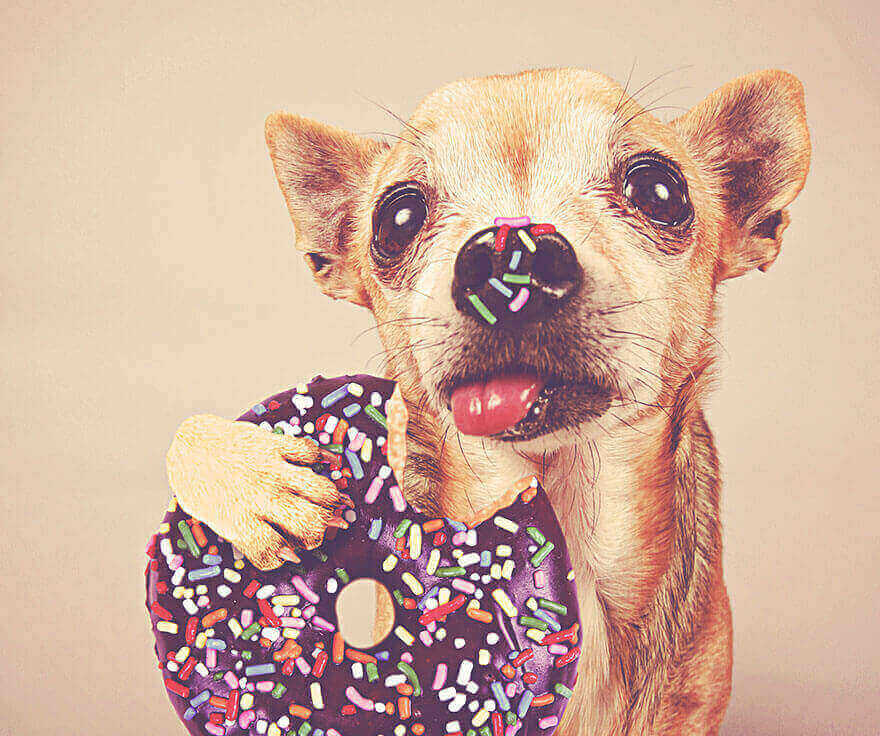

What To Do If My Dog Ate Chocolate?
Although a little too much chocolate is just the right amount for us, when it comes to our dogs it is a completely different story.

Writer Animalia Team
6 min read

Author Ursula Kohaupt once said – “Chocolate is happiness that you can eat” and we couldn’t agree more. Although a little too much chocolate is just the right amount for us, when it comes to our dogs it is a completely different story.
It may seem like every time you grab something to snack on, there’s an inescapable pair of puppy-dog eyes glued to you. Don’t give in. Our pets don’t know any better, but we, as owners, certainly should! We know that chocolate is a big no-no for dogs, and as sad as it may be for them to never experience the joy of it, this treat needs to stay out of their reach.
Sadly, accidents can happen. Your little friend might find their way to your dessert and now you have a potentially nasty situation on your hand. However, if you know what to do, you should resolve the matter quite easily.
How can chocolate be bad?
Putting aside rare cases of picky eaters – dogs will eat almost anything! And, unlike cats, they have quite the sweet tooth. Yet, regardless of whether your dog would enjoy a nibble of your chocolate bar, it’s simply not good for them to consume it as it could lead to chocolate toxicosis. In severe cases, it could even lead to death.
So, what exactly does chocolate do to our dogs?
We acquire chocolate from Theobroma cacao seeds. Within these seeds, we can find methylxanthines such as theobromine and caffeine. Herein lies our problem. Methylxanthines are perfectly easy and safe for humans to digest, but absorption, metabolization, and excretion are much slower in dogs.
The concentration of theobromine is 3-10 times higher than that of caffeine and is the main threat to dogs when they ingest chocolate. However, neither substance is good for your pet and they will both contribute to chocolate toxicosis.
Depending on the product, different amounts of methylxanthines may be found. The most concentrated and dangerous sources are:
- Dry cocoa powder – around 800 mg per ounce
- Cocoa beans – around 600 mg per ounce
- Unsweetened chocolate – around 450 mg per ounce. When a chocolate bar label shows the percentage of cacao, they are based on unsweetened chocolate, and you can calculate the approximate amount of methylxanthines. A 70% cacao chocolate bar would contain 450 x 0.7, or around 315 mg per ounce.
- Semisweet chocolate – around 150 mg/oz
- Milk chocolate – around 64 mg/oz
- White chocolate contains a tiny and negligible amount of methylxanthines, but it’s best to leave it on the side of caution and keep it away from your dog as well.
The amount of chocolate that could seriously harm your dog will vary based on many factors, such as the dog breed, its size and other individual sensitivities. Typically, mild symptoms can be seen after ingesting 20 mg of theobromine and caffeine per kg of bodyweight.
More severe cardiovascular issues could arise after consuming 40-50 mg/kg while over 60 mg/kg may lead to seizures. This means that just an ounce of milk chocolate could put your pup in lethal danger.
Symptoms of poisoning
Signs of chocolate poisoning can take 6 to 12 hours to appear, so if you think your dog has ingested something harmful, don’t wait for symptoms to show up – take immediate action!
Initial, more mild symptoms include:
- Extreme thirst (polydipsia)
- Vomiting
- Diarrhea
- Bloating
Over time, if unaddressed, signs may progress to:
- Restlessness and hyperactivity
- Excessive urination (polyuria)
- Lack of coordination (ataxia)
- Tremors
- Seizures
- Increased heart rate (tachycardia)
- Fast, shallow breathing (tachypnea)
- Cyanosis
- Hypertension
- Hyperthermia
Because many chocolate products are high in fat, their consumption can lead to pancreatitis in dogs.
In the unfortunate event of a severe and progressing toxicosis, death usually occurs as a result of cardiac arrhythmias, hyperthermia, or respiratory failure. Luckily, thanks to quick-acting owners, the mortality rate from chocolate consumption is very low.
What to do when you’re In Truffle
We usually use chocolate to solve our problems, but what do we do when chocolate becomes the problem?
You can diagnose chocolate toxicosis based on knowledge of exposure. Most times, pet owners will know if their dogs have managed to sneak into the dessert stash.
If you’re not sure but suspect your dog has had some of the forbidden fruit, a diagnosis can be made based on the symptoms shown. Keep in mind that if you suspect there’s a risk of chocolate toxicosis, the best course of action is to contact your vet immediately, even prior to any symptoms.
The first step to treatment is managing the potentially deadly clinical symptoms and stabilizing the patient. Vets may have to treat tremors, seizures, and arrhythmias. Large amounts of intravenous fluids may need to be administered to flush out the kidneys. The process is known as fluid diuresis – it helps excrete the toxins faster, and can stabilize cardiovascular function.
Stabilizing the patient isn’t going to be an issue for dogs brought in before symptoms start to develop. They can immediately receive the typical treatment for toxins.
The vet will try to induce vomiting using hydrogen peroxide and give the dog activated charcoal to bind the toxins in the gastrointestinal tract. Pet owners can do these things as well, but consulting a vet is always recommended – even through a phone call. Also, be mindful that over-the-counter activated charcoal may not be as efficient as the prescribed or vet-administered one.

Overall, the best thing to do for a dog that’s ingested chocolate is to find and administer appropriate treatment as quickly as possible. You’ll be lucky to hear that most dogs make a complete recovery after chocolate intoxication!
Before the unexpected happens, check out Animalia’s pet insurance plan for your dog. Get a quote from Animalia today to learn more.





We offer the most
comprehensive coverage
out there
car with a spare tire for life’s bumps.
Having Animalia is like a pimped-out
Rolls Royce with a swimming pool
in the trunk.



Get your pet insurance quote
Pet type
- Dog
- Cat
What is your pet's name?
Zip code





